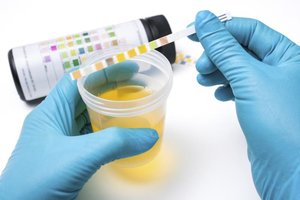- Home
- Editorial
- News
- Practice Guidelines
- Anesthesiology Guidelines
- Cancer Guidelines
- Cardiac Sciences Guidelines
- Critical Care Guidelines
- Dentistry Guidelines
- Dermatology Guidelines
- Diabetes and Endo Guidelines
- Diagnostics Guidelines
- ENT Guidelines
- Featured Practice Guidelines
- Gastroenterology Guidelines
- Geriatrics Guidelines
- Medicine Guidelines
- Nephrology Guidelines
- Neurosciences Guidelines
- Obs and Gynae Guidelines
- Ophthalmology Guidelines
- Orthopaedics Guidelines
- Paediatrics Guidelines
- Psychiatry Guidelines
- Pulmonology Guidelines
- Radiology Guidelines
- Surgery Guidelines
- Urology Guidelines
Bacteria in urine don't always indicate infection, unnecessary antibiotics lead to antimicrobial resistance

Bacteria in urine don't always indicate infection, unnecessary antibiotics may lead to antimicrobial resistance, reveal updated IDSA Guideline on asymptomatic Bacteriuria.
Asymptomatic bacteriuria (ASB) is a common finding in many populations, including healthy women and persons with underlying urologic abnormalities. Doctors should think carefully before testing patients for a urinary tract infection (UTI) to avoid over-diagnosis and unnecessary antibiotic treatment, according to updated asymptomatic bacteriuria (ASB) guidelines released by the Infectious Diseases Society of America (IDSA) and published in Clinical Infectious Diseases.
"Screening these patients is far too common and leads to the inappropriate prescribing of antibiotics, which some studies suggest may actually increase the risk of a UTI, as well as contribute to other serious infections such as Clostridioides difficile," said Lindsay E. Nicolle, MD, FIDSA, chair of the committee that developed the guidelines and professor emeritus at the Rady Faculty of Health Sciences at the University of Manitoba, Winnipeg. "Generally, physicians should not obtain urine cultures unless patients have symptoms consistent with an infection, such as burning during urination, frequent urination or abdominal pain or tenderness on the back near the lower ribs."
ASB - the presence of bacteria in the urine without the symptoms of an infection - is quite common and has been identified as a contributor to antibiotic misuse, which promotes resistance. While the updated guidelines follow previous recommendations to avoid testing certain groups of patients who don't have symptoms (called screening) - including healthy non-pregnant women, the elderly, people with diabetes and those with spinal cord injuries - they also include groups that weren't previously addressed, such as infants and children, people who have had joint replacement or other non-urologic surgery and those who have had organ transplants.
Some symptoms that people assume indicate a UTI - such as urine odor and confusion in the elderly - are usually caused by other conditions that should be ruled out before testing, Dr. Lindsay E. Nicolle said.
About 3 to 7 percent of healthy women have ASB at any given time, especially those who are sexually active, she said. About 50 percent of people with spinal injuries and 30 to 50 percent of people in nursing homes have ASB.
The updated guidelines follow previous guideline recommendations to screen and treat only patients who are at risk of developing complications of ASB, including pregnant women and those undergoing endoscopic urologic procedures.
For more details click on the link: http://dx.

Disclaimer: This site is primarily intended for healthcare professionals. Any content/information on this website does not replace the advice of medical and/or health professionals and should not be construed as medical/diagnostic advice/endorsement or prescription. Use of this site is subject to our terms of use, privacy policy, advertisement policy. © 2020 Minerva Medical Treatment Pvt Ltd